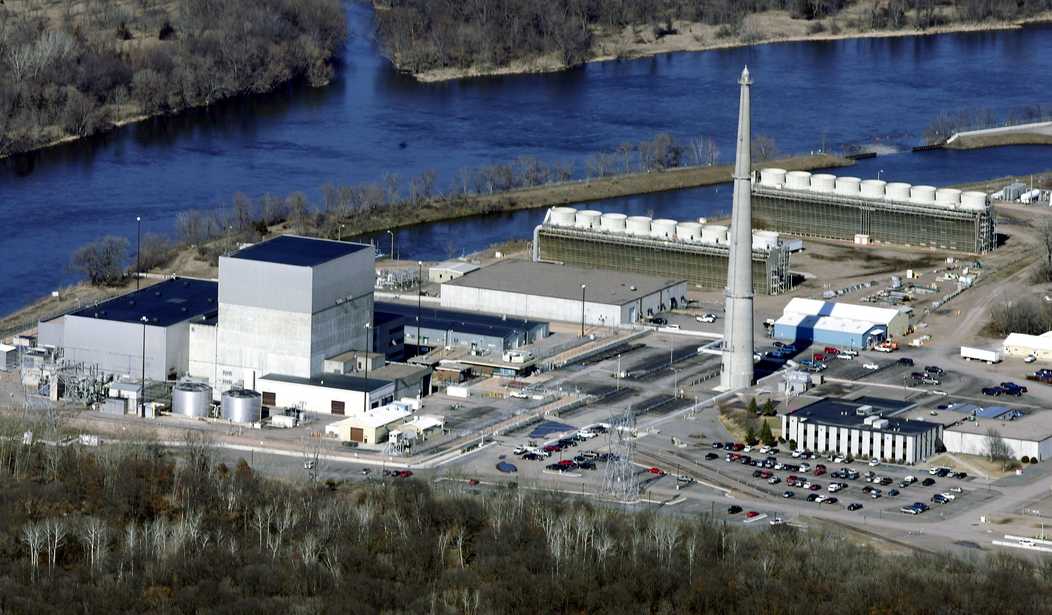As I wrote only earlier today (Friday), we solve today's problems with tomorrow's technology, and thorium molten-salt reactors are part of that future. While the United States is leaning back into nuclear power, we're still using uranium in those. Some exciting innovations are coming out, including safe and meltdown-proof pebble bed reactors and small modular reactors. Oh, and, sure, people are still messing with fusion reactors, but that's still forty years away - and has been for almost half a century.
But China has built something new, something that's been discussed for a long time: a thorium molten-salt reactor.
Situated in the Gobi desert in northern China, that reactor is up and running.
In the remote expanse of the Gobi desert stands the first thorium (Th) reactor ever built. Last year, researchers from the Chinese Academy of Sciences showed that this two-megawatt reactor could power up and operate without a glitch, and they have now achieved another first—successfully reloading it while it was still running. Thorium-232 (the isotope of thorium that most commonly occurs on its own) is not capable of undergoing fission by itself. By capturing an extra neutron, however, it can morph into protactinium, which decays into U-233. This can be achieved by exposing the thorium to extreme radiation, which bombards it with enough neutrons for the transmutation to happen. Protactinium is then extracted from the reactor’s active zone before too many neutrons can be lost.
There's a fair amount of physics there to absorb, but one key thing to know is that there is far more thorium in the earth's crust than uranium.
The Chinese reactor, as it happens, is new - but it's not the first.
It is possible to recycle the U-233 decay into new fuel, or continue fueling the machine with it as is, the latter of which is usually done with molten salt reactors like this new thorium reactor. These reactors are gaining traction again after a decades-long hiatus—almost $1 billion was spent on developing stealth bomber planes with molten salt reactors that used thorium for nuclear power at the dawn of the Cold War era. When the first functional molten salt reactor was developed by scientists at Oak Ridge National Laboratory, it ran at full power from 1965 though 1969 (over 13,000 hours), but the Department of Energy lost interest and no further work was done to advance the technology until the early 2000s.
This was a mistake. But it's a mistake we can rectify.
America's energy policy for the last few decades - especially the last four years, right up to, oh, 100 days ago - has been insane. The efforts required to stand up a new nuclear reactor, or to build a new one, can take decades to overcome. That's well to the left of ridiculous; the designs are proven, and the safety measures required are well-known. The new pebble-bed reactors are extremely safe. Small modular reactors have enormous potential, providing clean, cheap, reliable energy to small towns and remote communities.
Thorium molten-salt reactors have enormous potential as well. Why aren't we building these things all over the country? Even the climate scolds, were they attuned with science and not ideology, would be clamoring for nuclear power. It's everything they claim to want: Clean, no direct carbon emissions, and reliable.
See Also: Climate Scold Claims on Nuclear v. Wind/Solar: The Math Doesn't Add Up
Trump Plans Return to American Energy Independence. What Will the Climate Scolds Say?
And, best of all, these reactors don't produce product that can make a nuclear bomb - at least, not a very good one.
Thorium is not only more abundant than uranium, but has the upside of not being as easy to weaponize. While the fission of Th-232 produces protinactium, which decays into U-233 and can be used in nuclear weapons, U-233 isn’t nearly as explosive as other isotopes (the isotope most commonly used in uranium explosives is U-235). There wouldn’t be much of a point in dealing it to create an illicit nuclear bomb.
Someone at the United States Department of Energy needs to look into this, and America's energy sector needs to get cracking.
Our modern, technological lifestyle depends on cheap, reliable, abundant energy. These demands are only going to increase. The rise of artificial intelligence will drive a lot of the increased demand. And, as I'm continually pointing out, every major advance in human lifestyles, in human economies, and human technology has come with a corresponding increase in energy density of the primary power source - from wood/manure to charcoal, to coal, oil, and natural gas. Now it's nuclear power. Maybe one day fusion power will bo the next step, but we can't count on that right now.
Thorium molten-salt reactors are the future. The United States can't afford to let China steal a march on us with this technology.














